 |
| Radiolarians! A colored SEM image. Photo by John Cravens |
Well, in the real world, we get to see LIVING glass (or sometimes chalk) boxes that might pass for ornaments! But you need to shoot electrons at them to get something like a similar effect! Scanning Electron Microscopes are the gift that keeps on giving!
Another FWC diatom fr. Florida called Odontella aurita. More on its biology here.
The following are SEM images of foraminifera (shelled amoebas) taken by the National Museum of Wales..
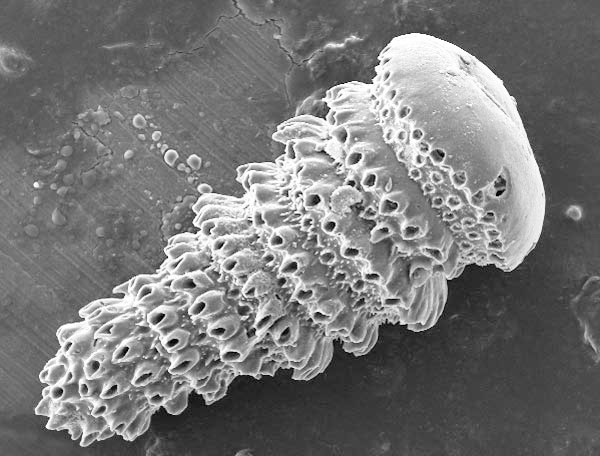 |
| Tubulogenerina narghilella. Image: Ian McMillan, Cardiff University. |
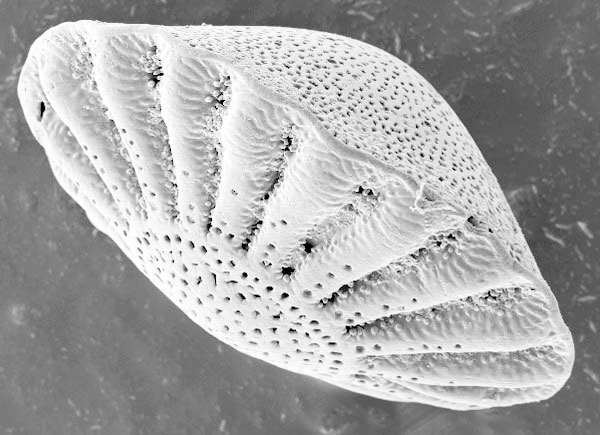 |
| Another foraminifera: Halkyardia minima. Image by Ian McMillan, Cardiff University. |
 |
| Image by Sea Surface OA cruises. Scanning electron microscope of Emiliania huxleyi: coccospheres and loose coccoliths from a bloom in the South Atlantic. |
Cretaceous coccolithophores!
 |
| Image by Jessica Matheson |
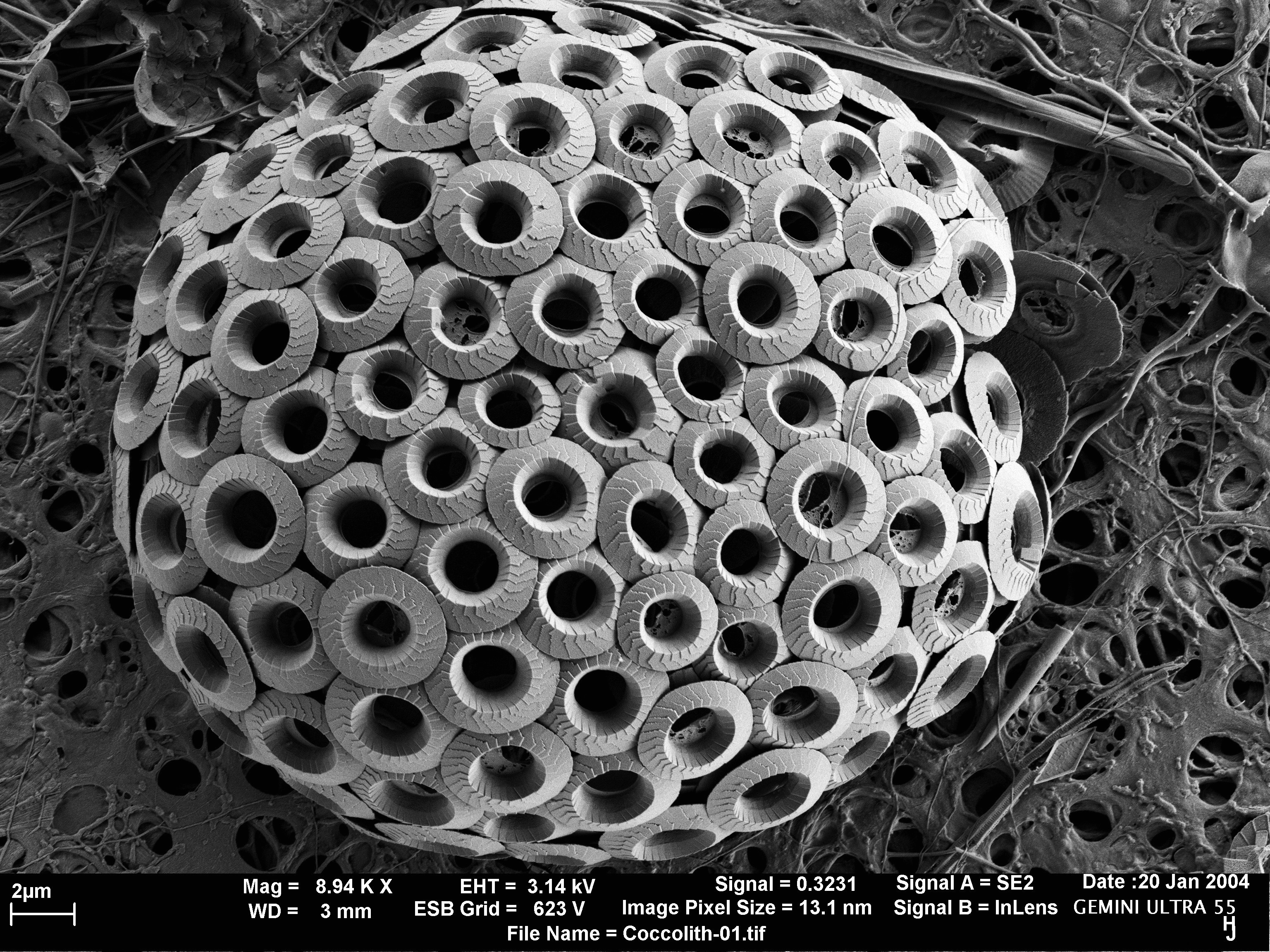
Happy Holidays! Echinoblog is off next week !
(thanks to Chris Taylor and Rhi L. for corrections!)

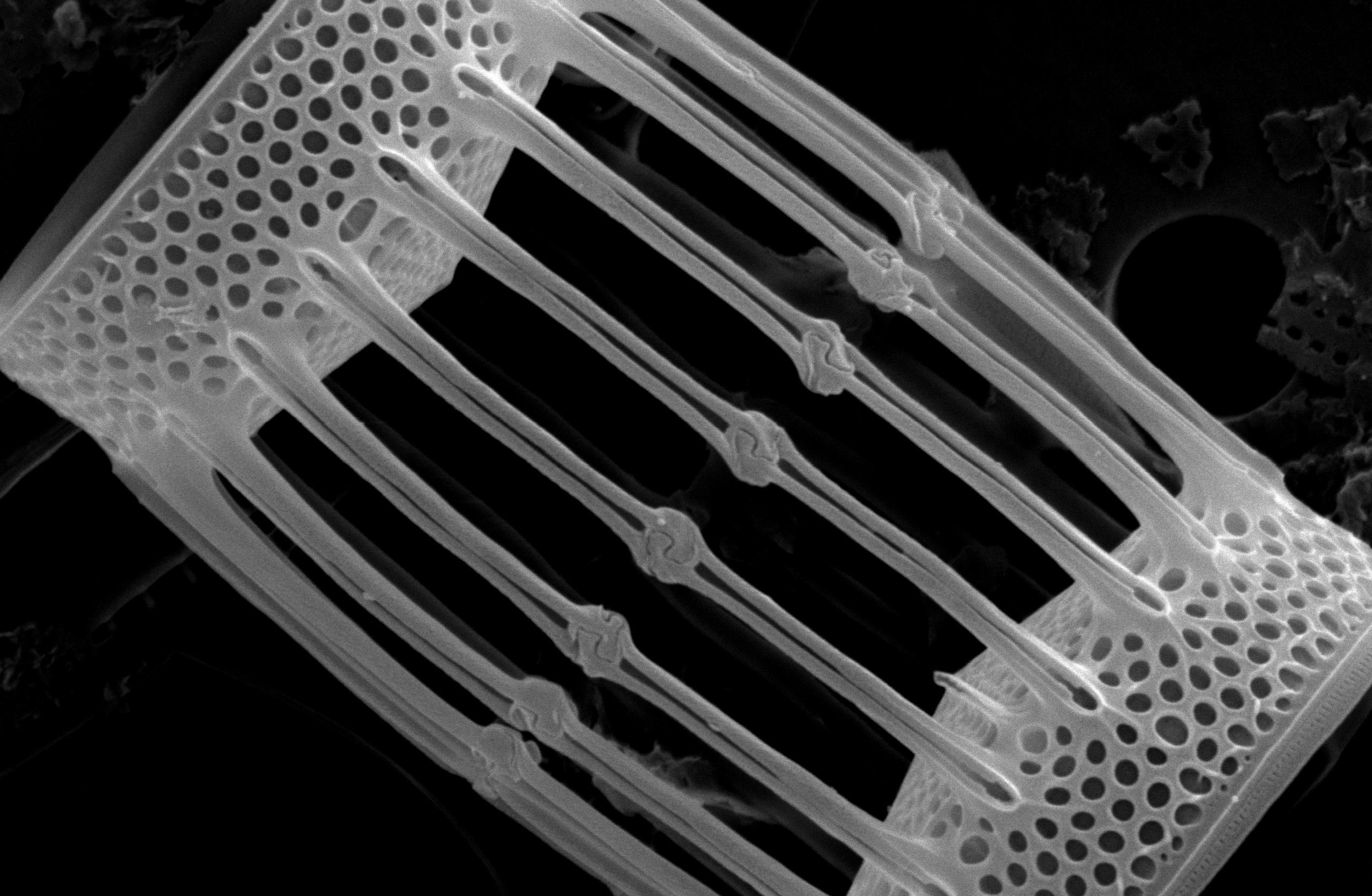
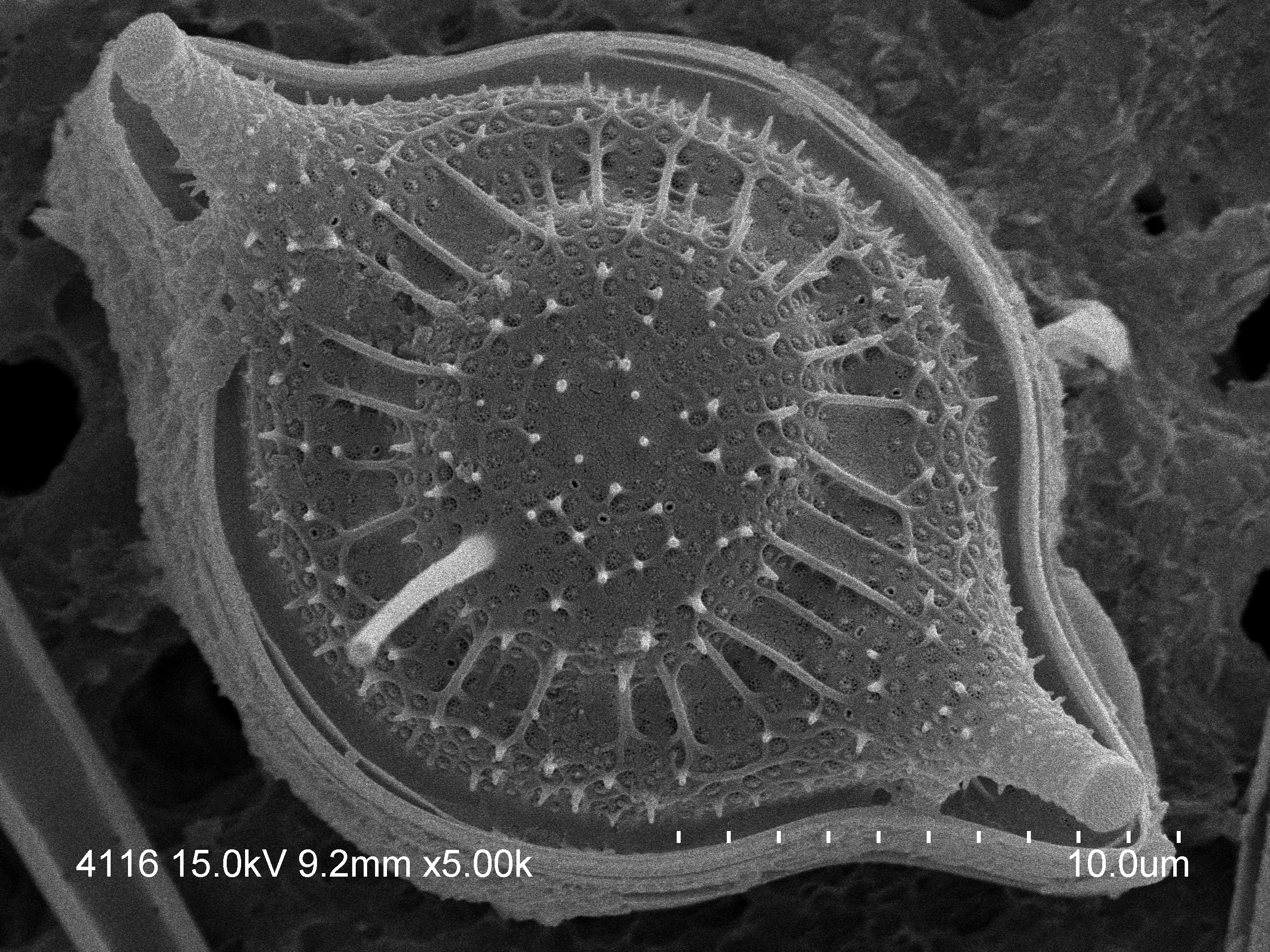
I recognise the first of your unidentified images: it's a silicoflagellate, Dictyocha or something close to it. The second: I know I've seen it before, I know that it's a dinoflagellate, but I can't for the life of me remember which one.
ReplyDelete